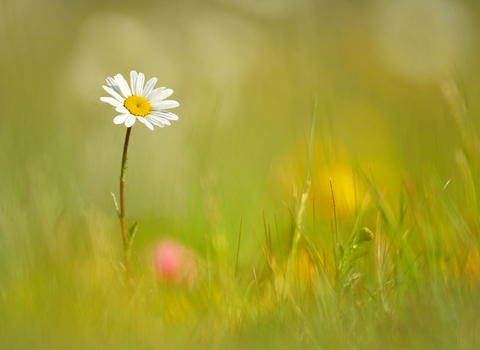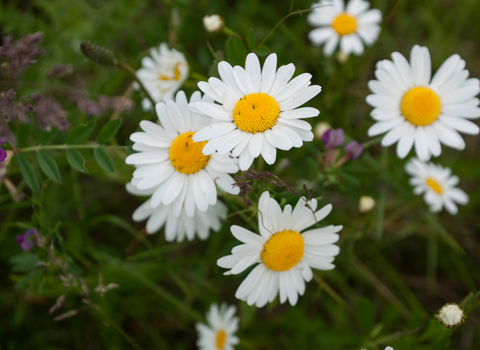
©Marl Hamblin/2020VISION

©Jon Hawkins

©Gemma de Gouveia
Oxeye daisy
Often growing in swathes along a roadside or field margin, the oxeye daisy is just as at home in traditional hay meadows. The large, white, daisy-like flowers are easy to identify.
